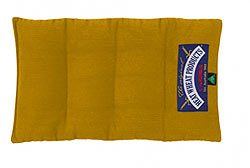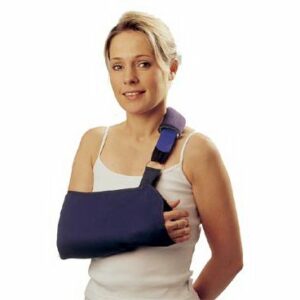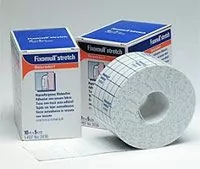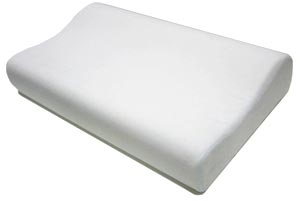AC Joint Sprain
Updated:
(Also known as a Shoulder Separation, AC Joint Injury, Sprained AC Joint, Torn AC Joint, AC Joint Subluxation, AC Joint Dislocation, Acromioclavicular Joint Injury)
What is an AC joint sprain?
An AC joint sprain is a relatively common sporting injury affecting the shoulder and is characterized by tearing of the connective tissue and ligaments of the Acromio-Clavicular joint.
The shoulder blade gives rise to a bony prominence known as the acromion. The acromion attaches to the collar bone (clavicle) via strong ligaments and connective tissue. This joint is known as the AC joint and is situated at the point of the shoulder (figure 1).
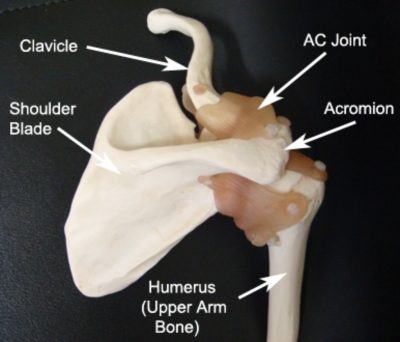
The AC joint is responsible for connecting the shoulder blade with the clavicle and allows for some shoulder movement. During certain activities, stretching forces are placed on the AC joint. When these forces are excessive and beyond what the AC joint can withstand, tearing of the ligaments and connective tissue of the AC joint may occur. This condition is known as an AC joint sprain.
An AC joint sprain can range from a small sprain resulting in minimal pain and allowing ongoing activity, to a severe sprain resulting in significant pain, deformity and disability.
Causes of an AC joint sprain
An AC joint sprain typically occurs due to a specific incident such as a direct blow to the point of the shoulder. This commonly occurs in contact sports due to a collision with another player or following a fall onto the point of the shoulder.
Signs and Symptoms of an AC joint sprain
Patients with this condition typically experience a sudden onset of pain on the top of the shoulder at the time of injury. Pain may increase with activities involving lying on the affected side, moving the arm across the body, overhead activity or performing heavy lifting, pushing or pulling movements with the affected arm. In minor cases of an AC joint sprain, patients may be able to continue activity only to experience an increase in pain, swelling and stiffness in the shoulder after activity with rest (particularly first thing in the morning).
In more severe cases, pain may prevent the patient from continuing activity and cause them to cradle the arm. Patients may also experience a rapid onset of swelling and may notice a ‘step’ deformity or bump in their shoulder with the tip of their collar bone sticking up. This occurs due to tearing of the connective tissue holding the AC joint together and the accumulation of swelling and bleeding around the joint.
Diagnosis of an AC joint sprain
A thorough subjective and objective examination from a physiotherapist is usually sufficient to diagnose an AC joint sprain. Investigations such as an X-ray, MRI scan or CT scan may occasionally be required to confirm diagnosis and determine the extent of damage or involvement of other structures. This is often important to exclude the possibility of a fracture.
Treatment for an AC joint sprain

Members Only ContentBecome a PhysioAdvisor Member to gain full access to this exclusive content. For more details see Become a Member. Already a member? Login Now
Prognosis of an AC joint sprain
With appropriate management, most patients with a minor to moderate AC joint sprain can return to sport or normal activity within 2 – 8 weeks. Patients with severe AC joint injuries will usually require a longer period of rehabilitation to gain optimum function.
Physiotherapy for an AC joint sprain
Physiotherapy for patients with this condition is vital to hasten the healing process, ensure an optimal outcome and reduce the likelihood of future recurrence. Treatment may comprise:
- soft tissue massage
- joint mobilization
- ice or heat treatment
- electrotherapy (e.g. ultrasound)
- protective taping
- the use of a sling
- anti-inflammatory advice
- exercises to restore flexibility and strength
- education
- activity modification advice
- a gradual return to activity program
Other intervention for an AC joint sprain
Despite appropriate physiotherapy management, a small percentage of patients with an AC joint sprain do not improve adequately. When this occurs the treating physiotherapist or doctor can advise on the best course of management. This may involve pharmaceutical intervention, corticosteroid injection, further investigation such as an X-ray, CT scan or MRI, or a review by a specialist who can advise on any procedures that may be appropriate to improve the condition. Occasionally surgery may be indicated to ensure an optimal outcome.
Exercises for an AC joint sprain
The following exercises are commonly prescribed to patients with an AC joint sprain. You should discuss the suitability of these exercises with your physiotherapist prior to beginning them. Generally, they should be performed 2 – 3 times daily and only provided they do not cause or increase symptoms.
Your physiotherapist can advise when it is appropriate to begin the initial exercises and eventually progress to the intermediate and advanced exercises. As a general rule, addition of exercises or progression to more advanced exercises should take place provided there is no increase in symptoms.
Initial Exercises
Shoulder Blade Squeezes
Begin this exercise by standing or sitting with your back straight. Your chin should be tucked in slightly and your shoulders should be back slightly. Slowly squeeze your shoulder blades together as far as possible without increasing your pain (figure 2). Repeat 10 times provided there is no increase in symptoms.
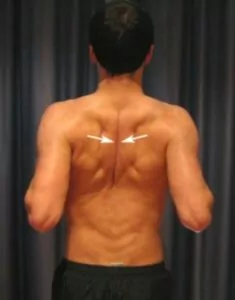
Pendular Exercises
Begin this exercise by leaning forwards with your good forearm supported on a table or bench (figure 3). Keeping your back straight and your shoulder relaxed, gently swing your affected arm forwards and backwards as far as possible pain-free. Once you have completed this exercise, repeat the exercise swinging your arm side to side as far as possible pain-free. Repeat 10 times each provided there is no increase in symptoms.
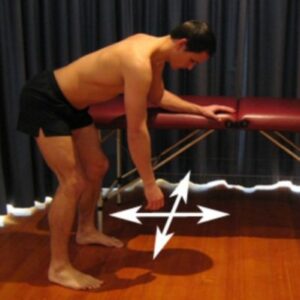
More Initial Exercises

Members Only ContentBecome a PhysioAdvisor Member to gain full access to this exclusive content. For more details see Become a Member. Already a member? Login Now
Intermediate Exercises

Members Only ContentBecome a PhysioAdvisor Member to gain full access to this exclusive content. For more details see Become a Member. Already a member? Login Now
Advanced Exercises

Members Only ContentBecome a PhysioAdvisor Member to gain full access to this exclusive content. For more details see Become a Member. Already a member? Login Now
Rehabilitation Protocol for an AC Joint sprain

Members Only ContentBecome a PhysioAdvisor Member to gain full access to this exclusive content. For more details see Become a Member. Already a member? Login Now
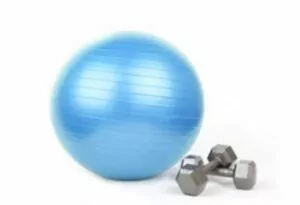 Physiotherapy products for an AC joint sprain
Physiotherapy products for an AC joint sprain
Some of the most commonly recommended products by physiotherapists to hasten healing and speed recovery in patients with an AC joint sprain include:
To purchase physiotherapy products for an AC joint sprain click on one of the above links or visit the PhysioAdvisor Shop.
 Find a Physio for an AC joint sprain
Find a Physio for an AC joint sprain
Find a physiotherapist in your local area to treat an AC joint sprain.
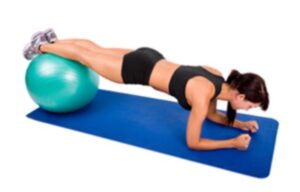 More Information
More Information
- View more Shoulder Strengthening Exercises.
- View more Shoulder Flexibility Exercises.
- View Shoulder Taping.
- View detailed information on when to use Ice or Heat.
- View detailed initial injury management and the R.I.C.E. Regime.
Become a PhysioAdvisor Member

Link to this Page
If you would like to link to this article on your website, simply copy the code below and add it to your page:
<a href="https://physioadvisor.com.au/injuries/shoulder/ac-joint-sprain”>AC Joint Sprain – PhysioAdvisor.com</a><br/>PhysioAdvisor offers detailed physiotherapy information on an AC joint sprain injury (shoulder separation) including: causes, symptoms, diagnosis, treatment, exercises, physiotherapy products and more...
Return to the top of AC Joint Sprain.




